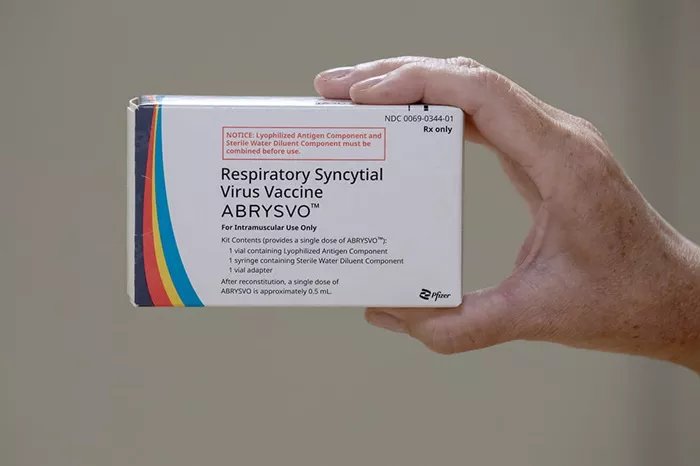The face is our most visible and expressive feature. It’s where we smile, communicate, and connect with others. But when scars appear—from acne, injuries, burns, or surgeries—they can feel like permanent reminders of pain or imperfection. For many people, facial scars go beyond skin deep. They affect confidence, emotional well-being, and even how others perceive us.
Whether it’s a dark mark left by a breakout or a raised scar from a childhood accident, most people who deal with facial scarring share a common goal: finding something that truly works. The search for the best scar medicine for the face is filled with creams, gels, oils, and treatments claiming miracles. But what really makes a difference? In this article, we’ll dive into the most effective scar treatments available, how they work, and which ones are backed by science.
What Causes Facial Scars?
Before choosing a treatment, it’s important to understand what kind of scar you’re dealing with. Not all scars are the same. Some are flat and pigmented, while others are raised, pitted, or stretched. Scars form when the skin is damaged and the body works quickly to repair itself. The type of scar depends on the depth of the injury, the speed of healing, and your individual skin type.
Acne is one of the most common causes of facial scarring. Deep cystic pimples can damage the skin and leave behind pitted scars or dark spots. Injuries from cuts or burns can result in hypertrophic scars, which are thick and raised. Surgical scars, though carefully closed by professionals, can still leave visible lines or discoloration.
Each of these scar types responds differently to treatment. That’s why finding the best scar medicine often requires knowing what you’re targeting and choosing ingredients that suit your specific needs.
The Role of Time in Scar Healing
One of the most overlooked factors in scar healing is time. In the early stages of healing, scars are still forming and can respond well to preventive care. This is the best time to use scar-reducing treatments—when the skin is still regenerating.
Fresh scars are usually red or pink, and applying the right treatment can minimize their visibility. But even older scars, those that have been present for years, can still improve with regular use of targeted medicine. It may take longer, and results might not be as dramatic, but improvement is still possible.
Patience and consistency are essential. Scar treatment is not a one-night miracle. Most products require daily use for several weeks or even months to produce noticeable changes.
Silicone Gel: The Dermatologist’s Favorite
Among all scar treatments, silicone gel is widely considered the gold standard. This odorless, transparent gel works by forming a protective barrier over the scar, which helps hydrate the skin and regulate collagen production. This reduces redness, flattens raised scars, and softens texture over time.
Silicone gel is suitable for almost every type of facial scar, including those from acne, burns, and surgery. It’s non-invasive, easy to apply, and safe for most skin types. Brands like ScarAway, Mederma Advanced Gel, and Kelo-Cote have received strong support from dermatologists.
For best results, silicone gel should be applied twice daily to clean, dry skin. Continued use for 8 to 12 weeks is often recommended, and in some cases, even longer for older scars. Silicone sheets, which stick to the skin, offer similar benefits but may be less comfortable for facial use.
Retinoids: A Powerful Tool for Acne Scars
If your scars are related to acne, retinoids may be your best ally. Retinoids are derived from vitamin A and work by accelerating cell turnover and boosting collagen production. This makes them especially effective for atrophic scars—those indented marks left behind by severe acne.
Topical retinoids like tretinoin, adapalene, and retinol are commonly prescribed or available over the counter. They not only help smooth the texture of scars but also lighten hyperpigmentation. However, retinoids can be irritating at first, especially for sensitive skin. It’s important to start slowly, using them every other night, and applying sunscreen daily to avoid sun sensitivity.
While retinoids don’t deliver instant results, they gradually remodel the skin and reduce scar depth over time. Visible improvements often appear after two to three months of consistent use.
Vitamin C Serums: For Brightening and Collagen Support
Vitamin C is not just an antioxidant—it’s a powerhouse for skin repair. When applied topically, vitamin C can help lighten dark spots, improve skin tone, and stimulate collagen. It’s especially useful for post-inflammatory hyperpigmentation—those dark scars that linger long after acne has healed.
Using a daily vitamin C serum can make your scars less noticeable and enhance the overall glow of your skin. Look for serums that contain L-ascorbic acid, the most potent form of vitamin C, in concentrations of 10–20%. Popular options include SkinCeuticals C E Ferulic, La Roche-Posay Pure Vitamin C, and The Ordinary Ascorbic Acid.
Vitamin C works best when applied in the morning, followed by sunscreen. With daily use, skin brightness and scar fading often improve within six to eight weeks.
Onion Extract: The Key Ingredient in Mederma
One of the most widely recognized scar gels on the market is Mederma, which contains onion bulb extract as its active ingredient. While this might sound odd, onion extract has anti-inflammatory and antibacterial properties that may help reduce redness and smooth scar tissue.
Mederma is effective for new scars and moderately effective for older ones. It’s lightweight, absorbs quickly, and is safe for daily use. While its results are usually less dramatic than silicone or retinoids, many users find it helpful, especially when started early in the healing process.
Daily application is key. For best results, Mederma should be used for at least 8 weeks on new scars and up to 6 months on older ones.
Natural Oils: Gentle Healing for Sensitive Skin
For those who prefer a more natural approach, certain oils can offer mild scar-reducing effects. Rosehip oil, for example, is rich in essential fatty acids and vitamin A, which help hydrate skin and encourage regeneration. Tea tree oil has antibacterial properties, which can help with acne-related scars. Vitamin E oil, though popular, has mixed reviews—some studies show it can cause irritation or even worsen scars in certain individuals.
Natural oils are generally less potent than pharmaceutical treatments, but they can be excellent for daily moisturizing and maintaining skin barrier function. They work best as supportive care, not as standalone scar cures.
Sunscreen: The Unsung Hero in Scar Healing
No matter what scar treatment you choose, sunscreen is non-negotiable. UV exposure darkens scars, increases inflammation, and slows healing. Without daily sun protection, even the best scar medicine will be less effective.
Choose a broad-spectrum SPF 30 or higher, and reapply every two hours if you’re outdoors. Mineral sunscreens with zinc oxide or titanium dioxide are often preferred for sensitive or healing skin. Applying sunscreen daily—even on cloudy days—can make a dramatic difference in how quickly and evenly your scars fade.
What About Over-the-Counter Scar Creams?
The drugstore is filled with products that promise to erase scars, but not all are created equal. Many contain a blend of ingredients like aloe vera, niacinamide, allantoin, and panthenol. These can soothe the skin, reduce redness, and improve hydration—but they won’t make thick, deep scars vanish overnight.
Some OTC scar creams offer convenience and gentle care, especially for people who are sensitive to stronger ingredients. While they may not deliver the same results as silicone gels or retinoids, they can be part of a supportive skincare routine.
When to See a Dermatologist
If your scars are deep, large, or unresponsive to over-the-counter treatments, a visit to the dermatologist is a smart next step. Professionals offer advanced options like laser therapy, microneedling, chemical peels, and corticosteroid injections for stubborn hypertrophic or keloid scars.
Laser treatments can reduce redness and flatten raised scars. Microneedling boosts collagen and improves the appearance of pitted scars. These treatments can be expensive and may require multiple sessions, but they often yield dramatic results under expert care.
Consistency and Commitment Matter Most
Even the best scar medicine in the world won’t work unless it’s used correctly and consistently. Many people give up after a week or two, expecting instant transformation. But skin healing is a slow, steady process. Most products need at least 8 to 12 weeks of daily use before real improvement can be seen.
Track your progress with photos, stay patient, and don’t jump from one product to another too quickly. Stick with your treatment, follow a good skincare routine, and protect your skin from further damage. Over time, scars can fade, smooth out, and become far less noticeable.
Conclusion
There is no single product that works for everyone. The best scar medicine for the face depends on your scar type, your skin sensitivity, and your commitment to treatment. For raised scars, silicone gel remains the most proven option. For acne scars, retinoids and vitamin C can work wonders. For early scars, onion extract and hydrating creams offer support.
What matters most is choosing a strategy and sticking with it. With consistent care, even stubborn facial scars can soften, fade, and blend into the background. Scars may be part of your story, but with the right treatment, they don’t have to define your face.
Related Topics

































